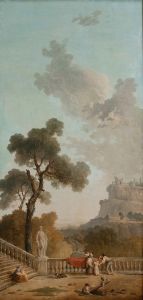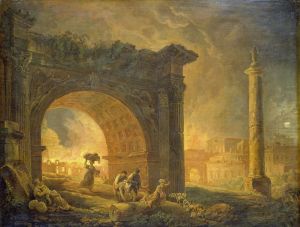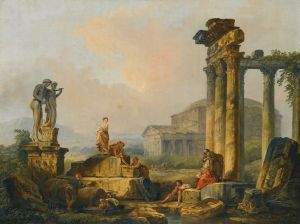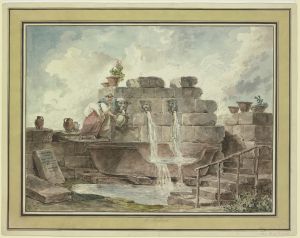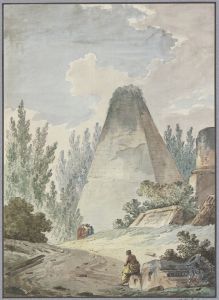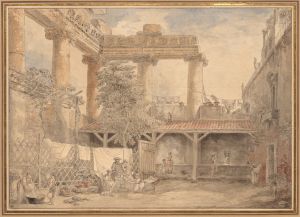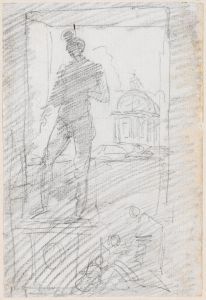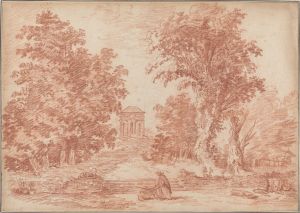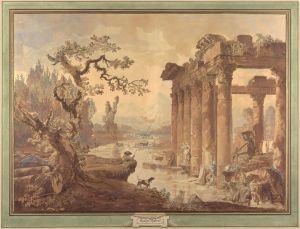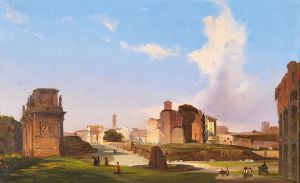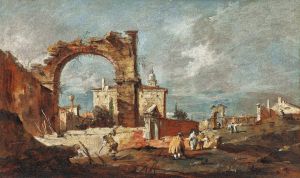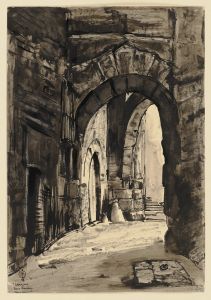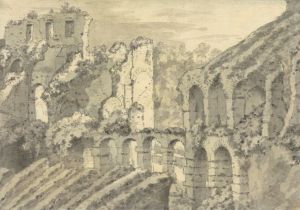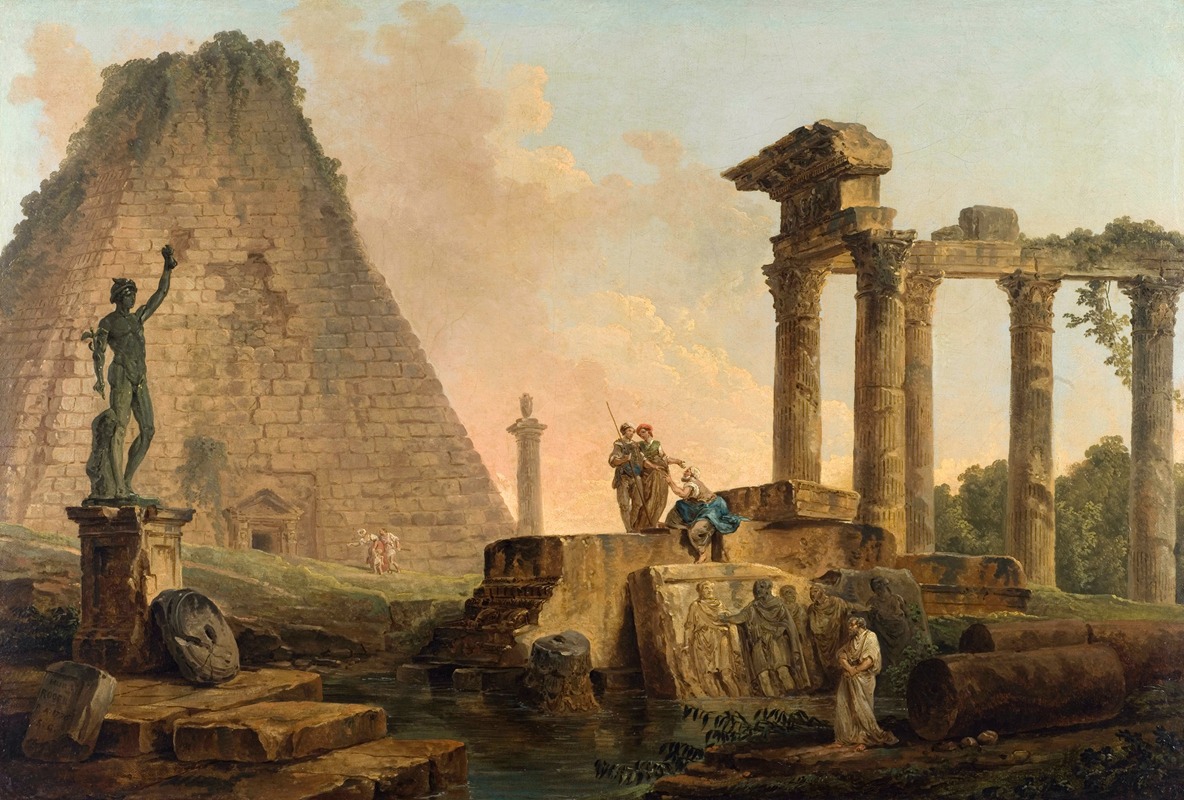
Ruines Romaines
A hand-painted replica of Hubert Robert’s masterpiece Ruines Romaines, meticulously crafted by professional artists to capture the true essence of the original. Each piece is created with museum-quality canvas and rare mineral pigments, carefully painted by experienced artists with delicate brushstrokes and rich, layered colors to perfectly recreate the texture of the original artwork. Unlike machine-printed reproductions, this hand-painted version brings the painting to life, infused with the artist’s emotions and skill in every stroke. Whether for personal collection or home decoration, it instantly elevates the artistic atmosphere of any space.
"Ruines Romaines" is a painting by the French artist Hubert Robert, who was renowned for his depictions of architectural ruins and imaginative landscapes. Born in 1733, Robert became one of the most celebrated painters of his time, particularly known for his ability to blend reality with fantasy in his works. His fascination with ruins earned him the nickname "Robert des Ruines."
The painting "Ruines Romaines" exemplifies Robert's skill in capturing the grandeur and melancholic beauty of ancient ruins. Although specific details about this particular painting are scarce, it is consistent with Robert's broader oeuvre, which often featured Roman architecture as a central theme. His works typically combined elements of real Roman structures with imagined compositions, creating a sense of timelessness and romantic decay.
Robert's interest in ruins was partly inspired by his time in Italy, where he studied from 1754 to 1765. During his stay, he was deeply influenced by the ancient Roman ruins he encountered, as well as by the works of Giovanni Battista Piranesi, an Italian artist known for his etchings of Rome and its ruins. This period in Italy was formative for Robert, shaping his artistic vision and thematic focus.
"Ruines Romaines," like many of Robert's paintings, likely features a blend of real and imagined elements. His works often depict grandiose architectural structures, such as temples, arches, and columns, set within idyllic landscapes. These compositions evoke a sense of nostalgia and reflection on the passage of time, themes that were popular during the 18th century, particularly in the context of the Enlightenment and the burgeoning interest in classical antiquity.
Robert's paintings are characterized by their meticulous attention to detail and dramatic use of light and shadow. He often employed a warm color palette, which added to the romantic and serene atmosphere of his scenes. The figures in his paintings, though often small in scale compared to the monumental architecture, add a human element that enhances the narrative quality of his work.
Throughout his career, Hubert Robert held several prestigious positions, including serving as the curator of paintings at the Louvre Museum. His contributions to the arts were recognized by his contemporaries, and he was admitted to the Royal Academy of Painting and Sculpture in 1766.
"Ruines Romaines" is a testament to Robert's enduring fascination with the remnants of the past and his ability to transform them into evocative works of art. His paintings continue to be appreciated for their artistic merit and their ability to transport viewers to a world where history and imagination intertwine. While specific information about "Ruines Romaines" is limited, the painting remains an integral part of Robert's legacy as a master of capturing the poetic beauty of ruins.





